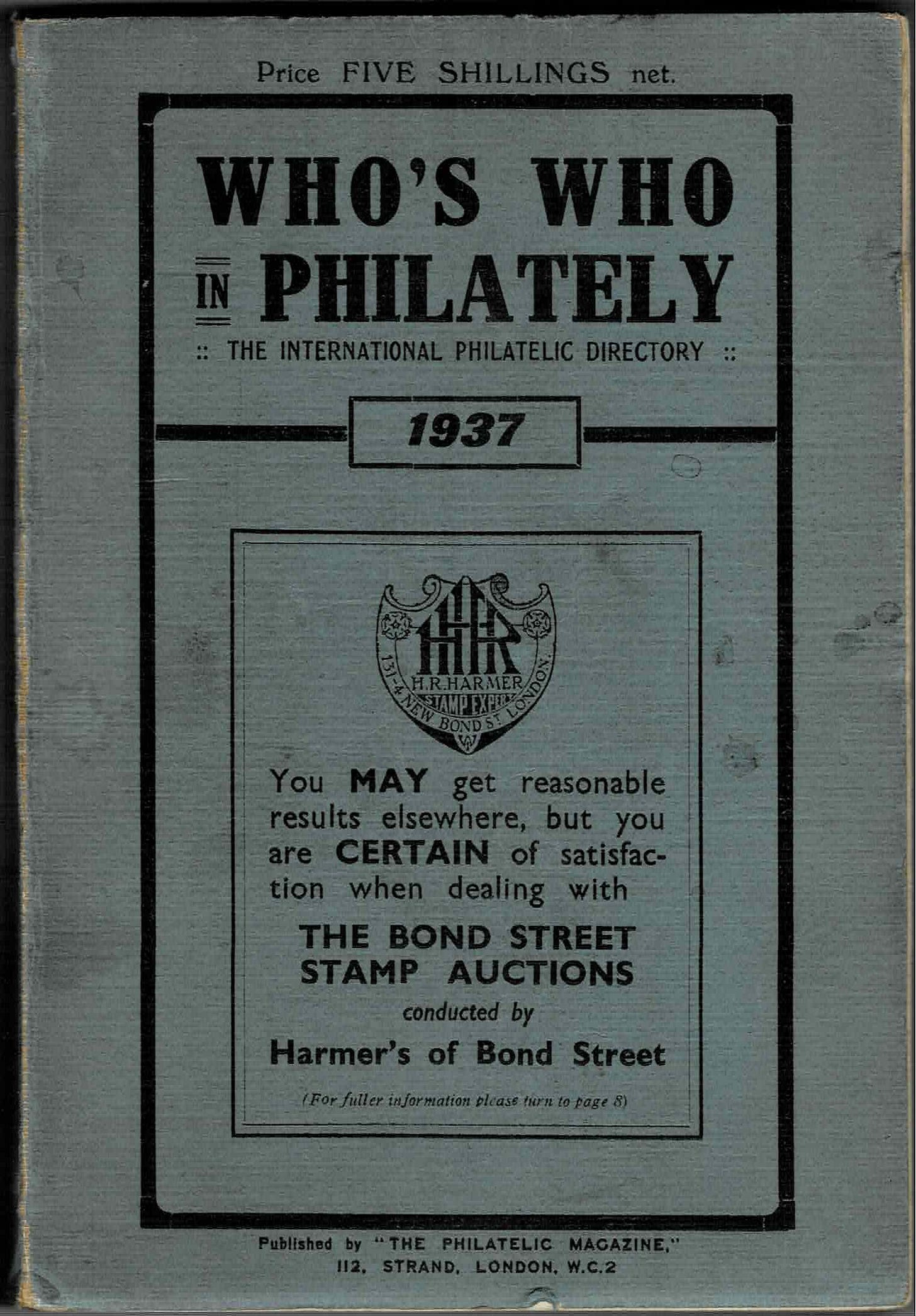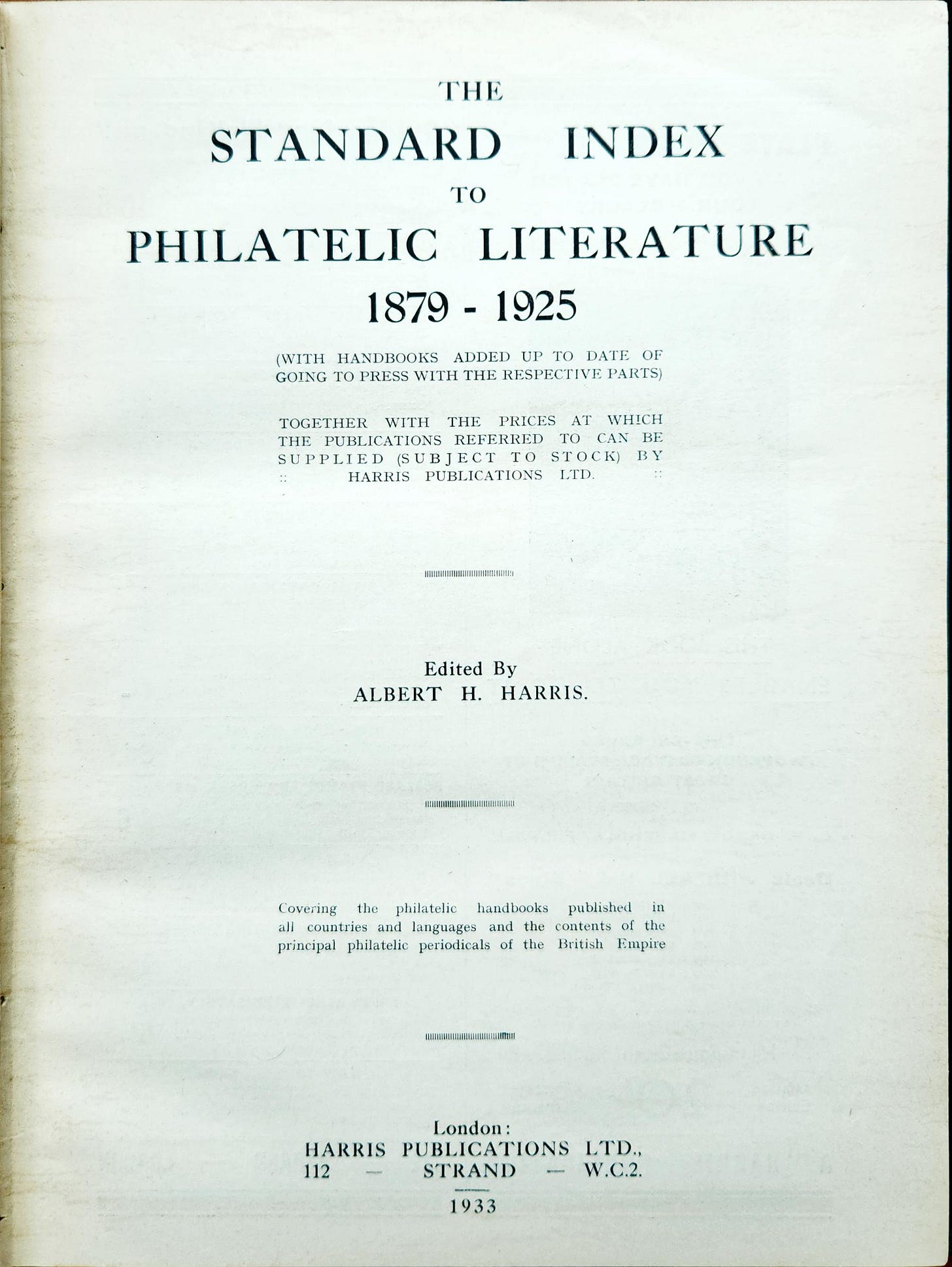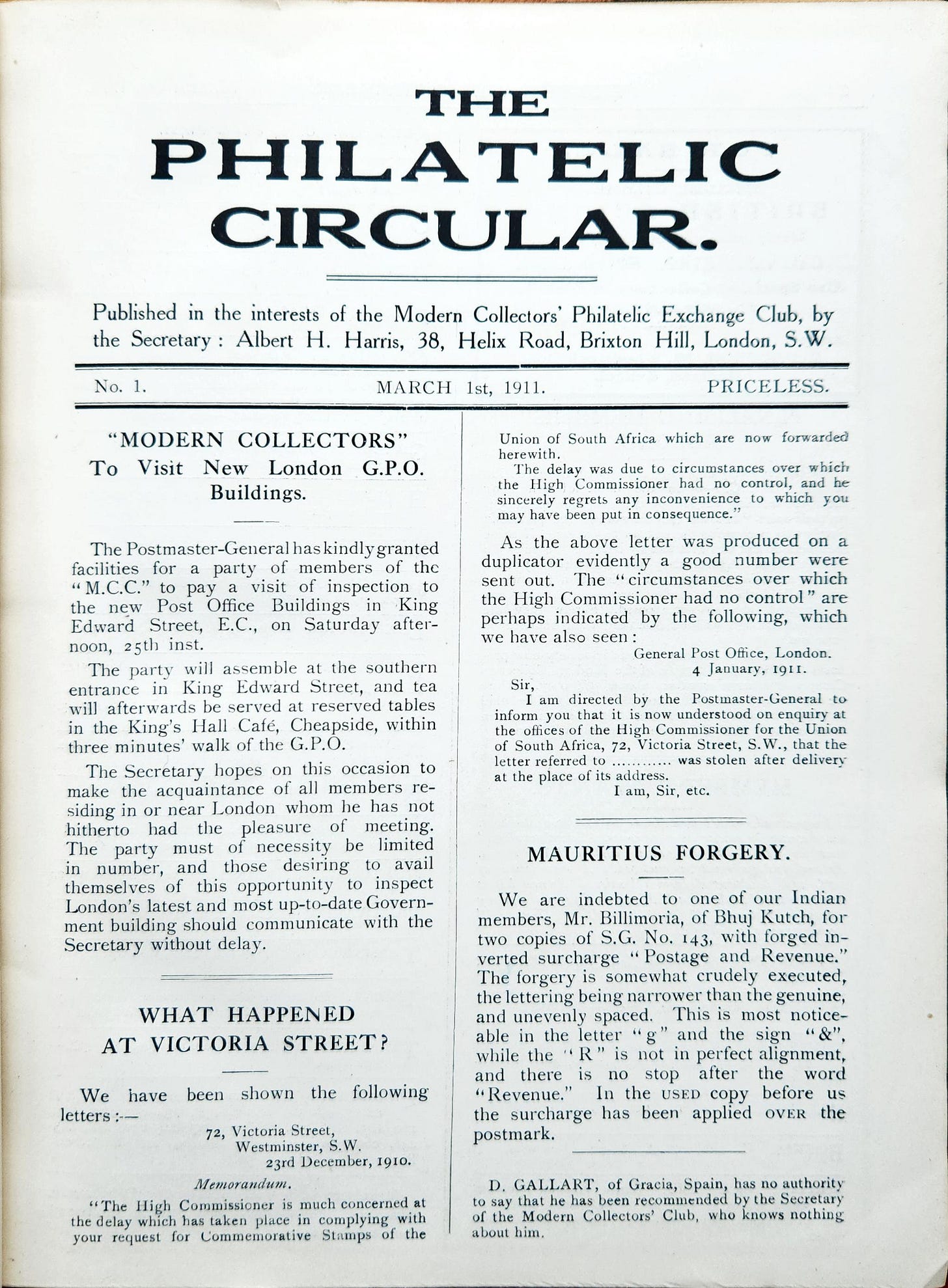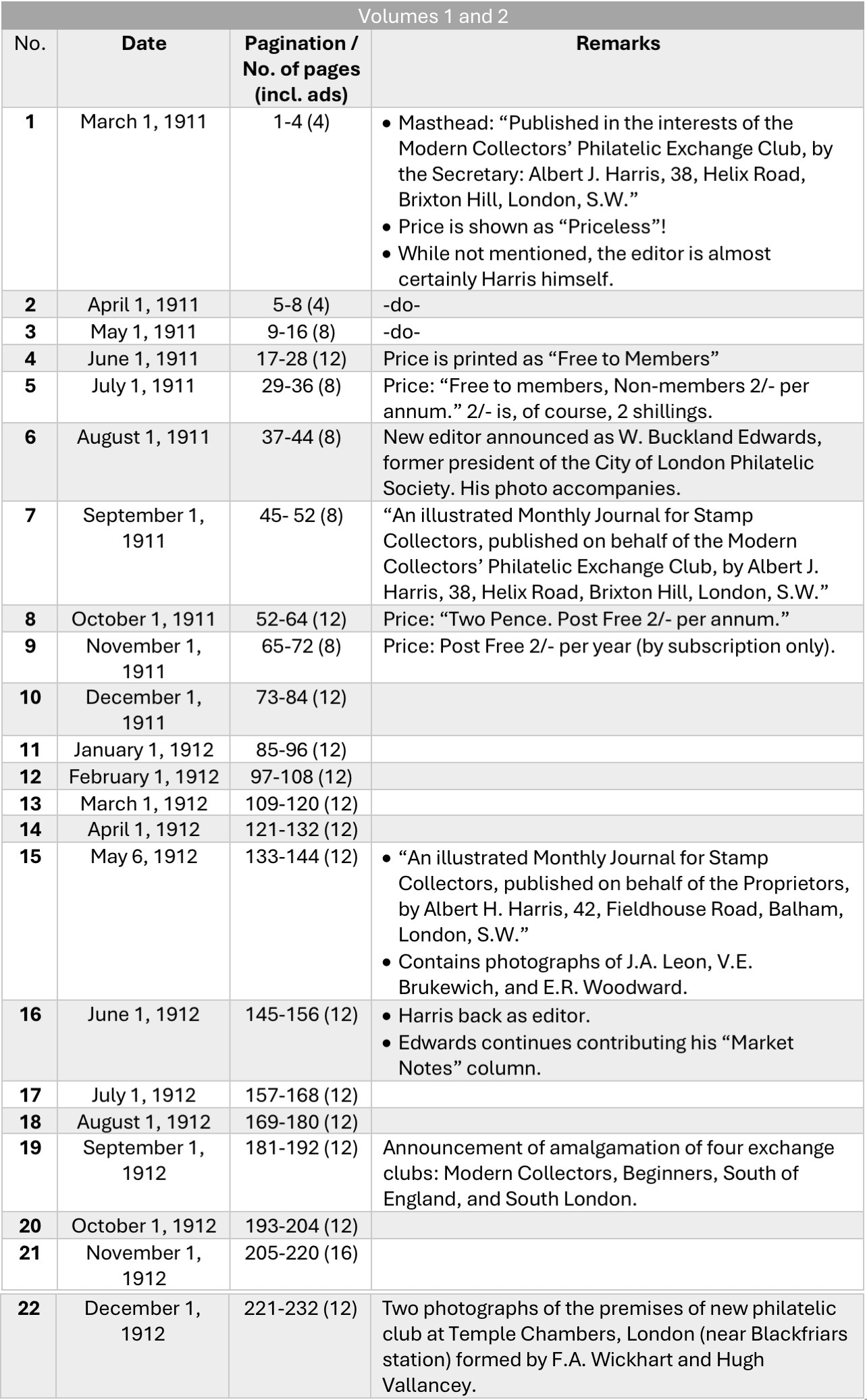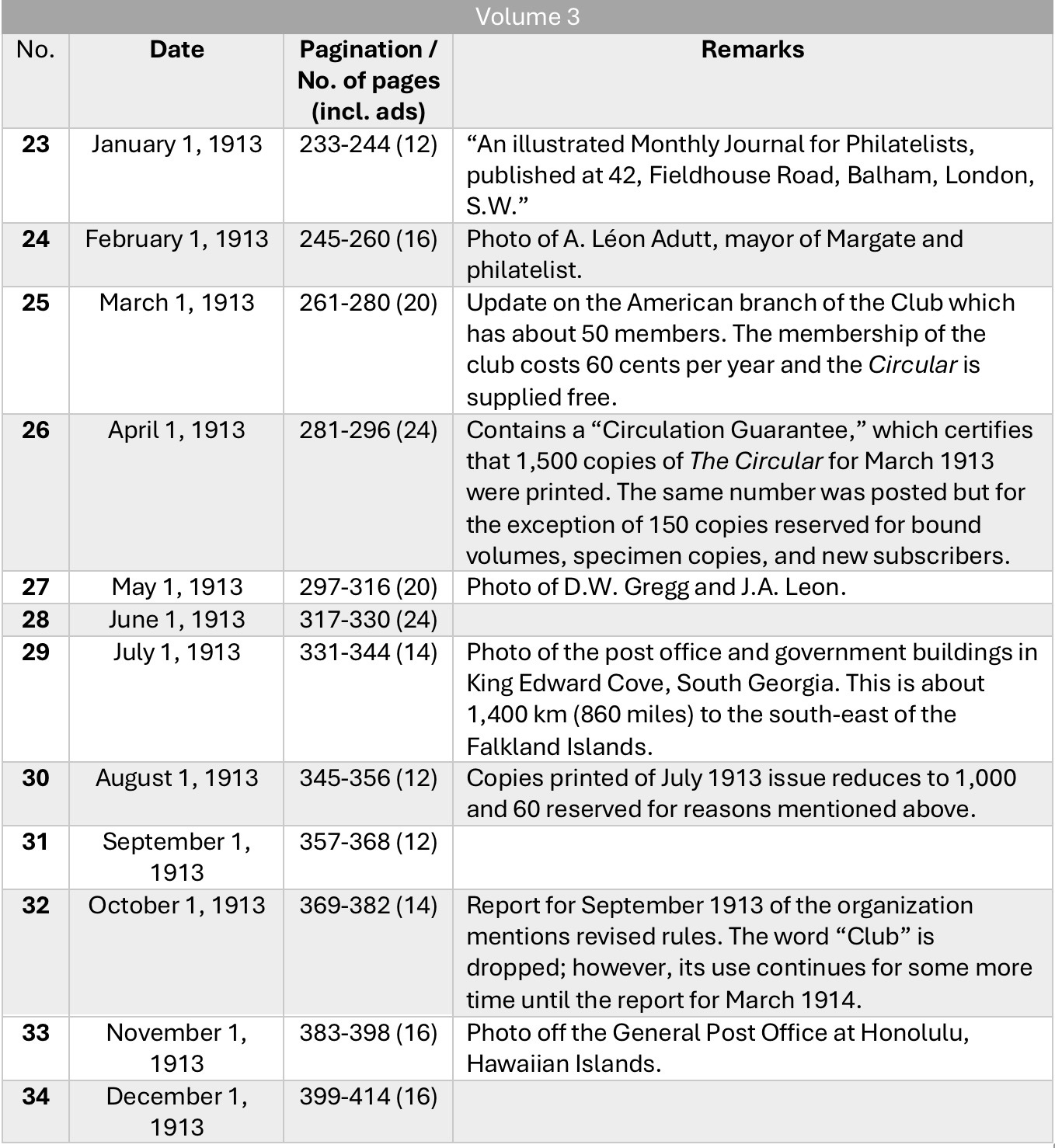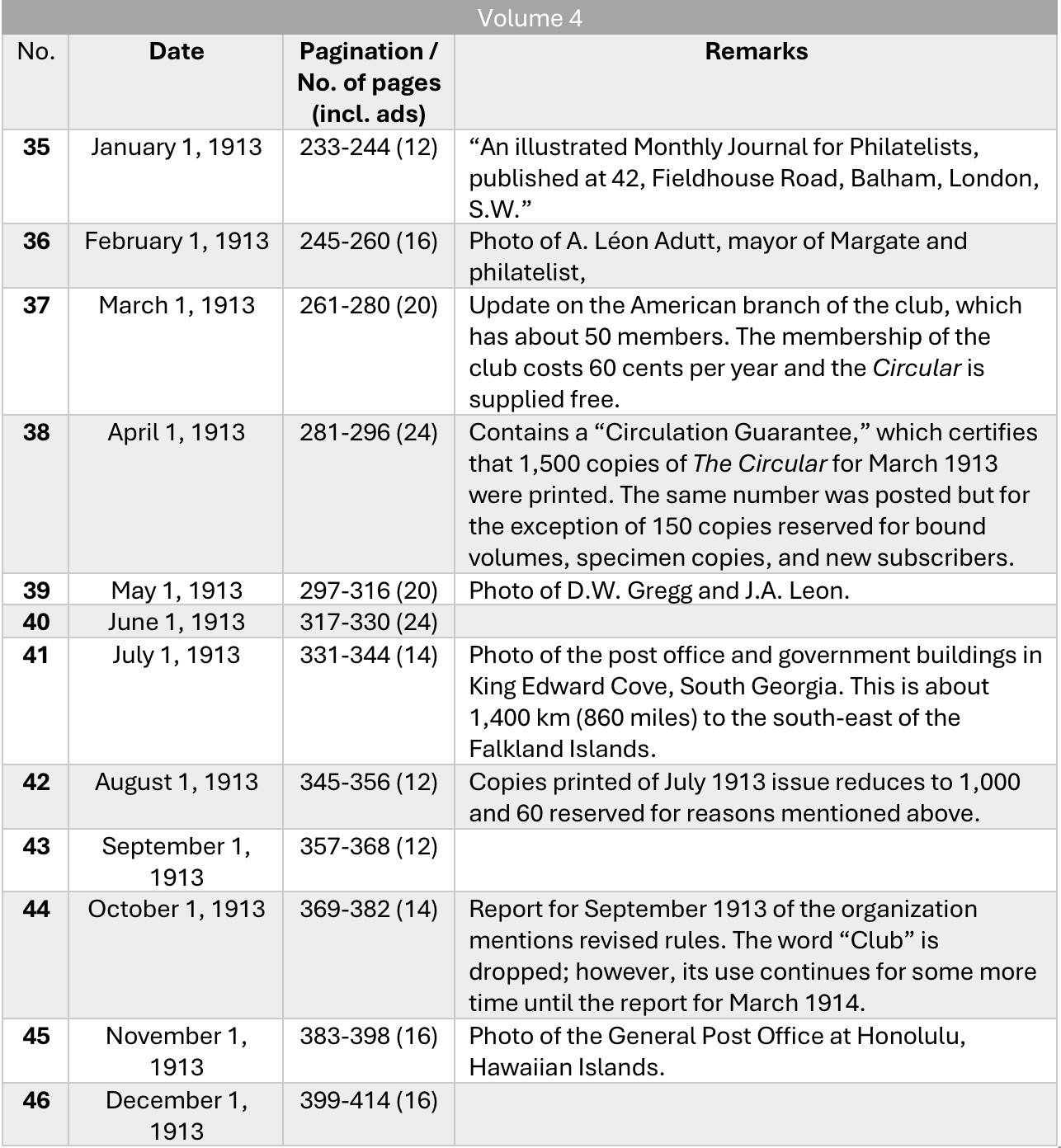This article was first published as “Albert Harris and his Philatelic Circular” Philatelic Literature Review 74 no. 1 whole no. 286 (Spring/Summer 2025)
Philatelic literature dealer. Publisher and editor of multiple stamp magazines and annuals. Supplier of philatelic albums and accessories. Philatelic organizer. One man was all this and more: Albert H. Harris. In this article, I will give a brief on Harris and cover his first journalistic endeavor: The Philatelic Circular.
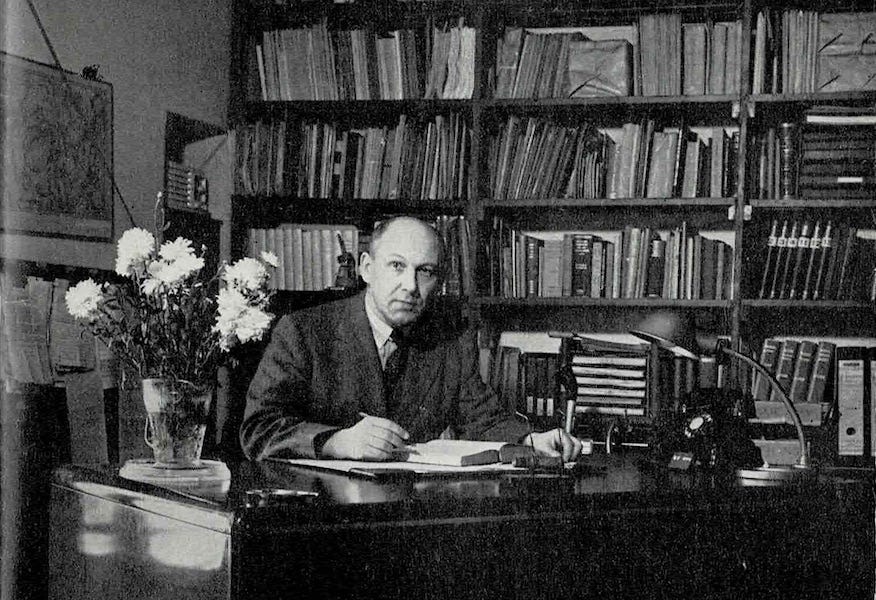
Harris, the businessman
Albert Henry Harris (Figure 1) was born September 13, 1885 in Croydon, England and educated at Luton and Hampshire. He became interested in stamps during his school days. He left to complete his education in Paris, where his adventures at the dealers’ stalls and tables in the collectors’ open-air bourse there activated his interest in stamps. He is said to have begun a sort of exchange club among his schoolmates.
On his return to England, Harris started the Enterprise Stamp Club in November 1902 with two friends. This was renamed in October 1903 as the Enterprise Philatelic Society, and to the City of London Philatelic Society in October 1906.
Harris began his business career as a junior in the editorial offices of Ernest Benn Ltd., then among the leaders of magazine publishers. He gradually veered toward the stamp trade, in particular, philatelic journalism and dealing in philatelic literature.
On March 1, 1911, Harris launched a monthly magazine – the Philatelic Circular – for one of his other early enterprises, the Modern Collectors’ Philatelic Exchange Club. After acquiring two other magazines (The Collector’s Magazine and The Collector’s Monthly) in October 1915, and after 58 issues, its name was changed to The Philatelic Magazine in effect from January 1, 1916. In July 1919, Harris moved into offices in Fleet Street and made the magazine a fortnightly.
Down the road, Harris (and his successors) also acquired the venerable Alfred Smith’s Monthly Circular (1922),1 The Record of Philately (1936), and perhaps the most prestigious, Stamp Collectors’ Fortnightly (1958).
In 1923 he moved to Windsor House, Victoria Street and then again, in 1927, to 112 Strand, at which place he remained until his death.
In February 1926, Harris bought The Philatelic Trader, which had been published since 1899, and transformed the magazine into an influential organ. He founded the Philatelic Traders’ Society (PTS) in 1928.2 The society was a department of Harris Publications until 1946. Just after Harris’ death, it became independent and, on December 31, 1949, merged with the Stamp Dealers’ Association.
From 1914 to 1937, Harris also brought out 13 editions of Who’s Who in Philately in book form (Figure 2). The 14th edition was incorporated in Harris’ Stamp Collector's Annual. The annual began in 1904 by London dealer Charles Nissen and Co., was purchased by Harris in the early 1920s.3 The 16th edition of the annual of 1923 was the first published by his company.

Finally, between 1925 and 1932, Harris edited his most famous work, The Standard Index to Philatelic Literature. Over the years, it was published in six parts (Figure 3) and in 1933, in book form (Figure 4). Harris was interested in indexing since an early age, and he was probably one of the few who could see an index to fruition. Further, such an index would be a natural extension of his philatelic literature business.
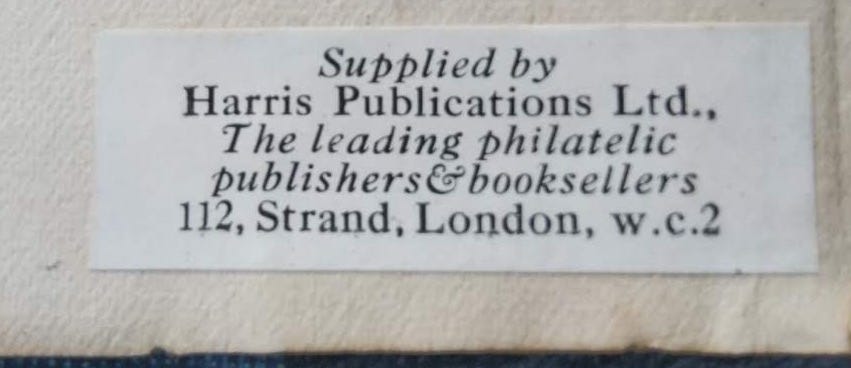
Harris founded Harris Publications, Ltd. around 1911. By the 1920s, the company had become an important supplier of philatelic literature (Figure 5), and it maintained that position well into the 1940s (Figure 6). Harris’ stock of books and magazines was surely the largest in Britain, and possibly in the world.
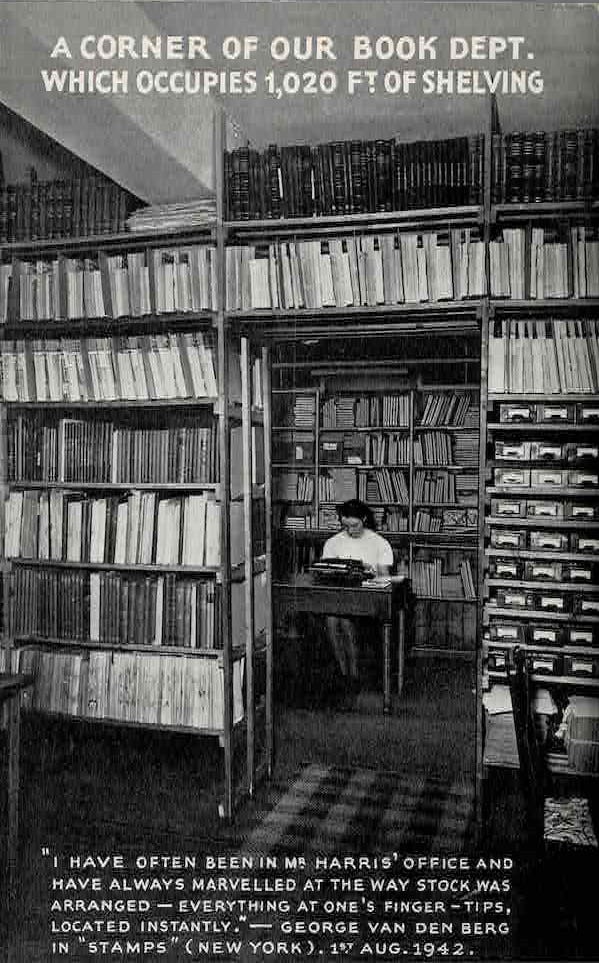
Apart from the massive Bellamy library (about 10 tons), which Harris bought in 1938 (see my article on Bellamy in the Q1 2024 issue of the Philatelic Literature Review), he also purchased many other important libraries, including those of Hugo Griebert, as well as considerable portions of the Edgar Weston stock (Figure 7). It may be pertinent to mention here that Weston traded under the name “Victor Marsh” and was the biggest philatelic literature dealer of the early 20th century.
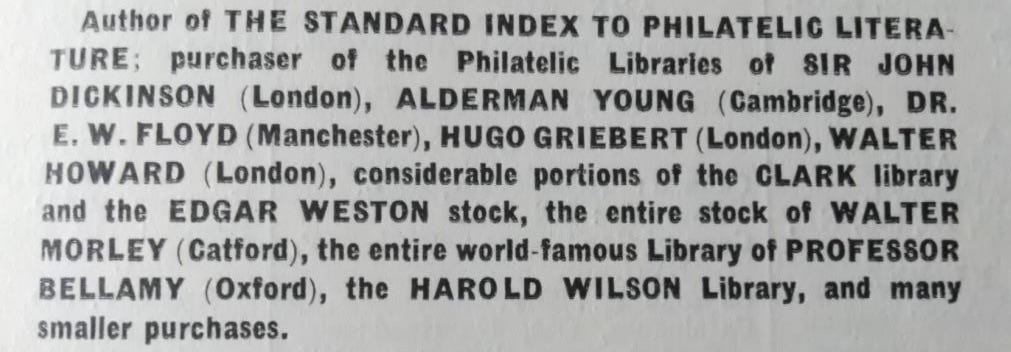
Harris died suddenly on November 29, 1945 at age 60 (Figure 8). Tributes from high and low poured in. One correspondent to The Philatelic Magazine said, “Philately has lost its Churchill.”4

Harris’ only child, Captain Henry Gordon Harris, was then serving with the army in Burma. Once he was demobilized, he came back to handle the company as its managing director.
Further, the company was reorganized changing policies and premises. It was decided to get out of the literature business. While some valuable titles were sold by auction through R.C. Jacombs in 1946, the rest of the stock, excepting current publications, was purchased in January 1947 by Hugh Vallancey.
Tom Morgan (c. 1904-1965) (Figure 9) took on the role of editor of The Philatelic Magazine, Philatelic Trader, Stamp Collectors’ Annual, International Stamp Dealers’ Directory, and all Harris Publications’ productions. Vera Trinder (1919-2016)5 (Figure 10) became the company’s director and general manager.6
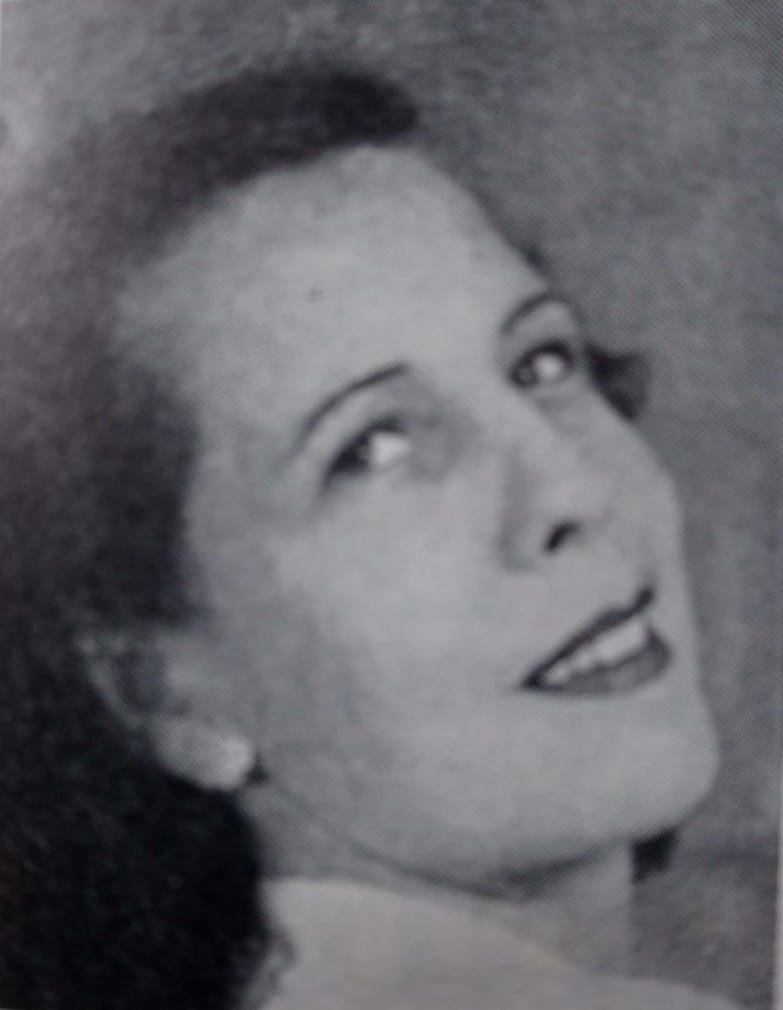
Harris, the man
At this juncture, it may be apt to know what kind of a person Harris was.
Kenneth Francis Chapman (1910-2006), the doyen of British philatelic journalism, had joined Harris Publications in February 1928. He was just 17 and was immediately immersed in the production of The Standard Index. Five of his formative years was spent under Harris’ guidance.
In his introduction to the reprint edition of The Standard Index,7 Chapman gave a brief, but remarkable, insight into the man. He described Harris as imbued with a devotion to good philatelic practices and having an “eagle eye” for empty “puffs.” He was a hard taskmaster and strict in his deportment. He was always ready to do wield swords in print, aware of, but not intimidated by, the laws of libel and working just within them.
Harris’ battles with Stanley Phillips, the editor of Stanley Gibbons Monthly Journal, which tended, “a little pompously, to consider itself the voice of British Philately” and the more down-to-earth Hugh F. Vallancey, the editor of Stamp Collecting, and Harris’ main rival in the philatelic literature business, “kept Harris alive and well!”
Further, while journalism and good business do not always go together, Harris was a good businessman always looking to cut costs and save labor. For example, he used a Dictaphone for writing letters thus keeping the typist fully employed while he himself had extended lunches with friends! Another of his innovations was the introduction of an up-to-date accounting system called Moore’s Modern Methods, which replaced the “old-fashioned Dickensian monstrosities” being used by others.
Chapman concluded by saying that Harris’ death “deprived the philatelic world of one of its greatest characters before due time; perhaps not universally beloved but certainly admired and respected by all those who knew and understood him.”
In their “appreciation” published upon Harris’ death in the December 14, 1945 issue of The Philatelic Magazine, the famous Williams brothers, Leon Norman and Maurice, described Harris as a “fearless critic and remorseless enemy of the wrong-doer in philately.” They said that the volumes of The Philatelic Magazine and The Philatelic Trader bore abundant testimony to his tireless efforts in bringing out the best features of philatelic endeavor and shining “the light of publicity on the dark corners wherever malpractices occurred.” “Fly-mark” and “dotty” philately often drew scorn from his pen as be believed that the collecting and publicizing of fortuitous minor varieties were to be deprecated.
The Philatelic Circular
In the second half of 1909,8 Harris founded the Modern Collectors’ Philatelic Exchange Club (an exchange club is an organization for the exchange of collectors’ duplicates). He designated himself as its “secretary” (later “senior secretary and then “general secretary”).
The word “Modern” in the club’s name did not mean that the club dealt only in new issues; rather it probably announced a different “modern” way in which the new outfit would conduct itself. It believed that the “average club packet, while useful to the beginner” was “of very limited assistance to the busy man, the advanced collector, or the specialist.” Hence, the club provided “packets from which all rubbish” was excluded.9 For instance, one regulation with respect to exchange sheets was that “no single specimen may be priced at a lower value than 6d. net, or 1s gross.” (gross meant that a 50 percent discount applied). Three monthly packets – one general packet (net), one general packet (gross), and one Great Britain packet (net) would be circulated every month. The club also kept a register in which members’ wants and offers were recorded and buyers matched with sellers. For its efforts, membership of the club cost 2 shillings and 6 pence per year. The club took 10 percent commission on all sales.
On March 1, 1911, Harris brought out the first issue of the club’s official organ, The Philatelic Circular (Figure 11). Given that it is surprisingly scarce, I have given details of its contents in the appendix.
The first two issues contained just four pages but the third had eight and the fourth 12 pages. Harris maintained the page count at between eight and 12 until issue 20 of October 1912. The 21st number contained 16 pages and all future issues until the 58th contained between 12 and 24 pages; this was despite any difficulties that he may have faced due to the outbreak of World War I in July 1914.
The first five issues of The Philatelic Collector were probably edited by Harris himself. He brought in W. Buckland Edwards (Figure 12), a well-known writer and former president of the City of London Philatelic Society, as editor from the sixth issue, that of August 1911. Edwards did not last long, and Harris was back as editor from the 16th, or the June 1912 issue. The changeover was likely amicable as Edwards continued his regular contributions to the magazine via his “Market Notes” column well into the 56th, or October 1915, issue.
The first issue of the magazine which carried illustrations was the fourth one (June 1911). The word “illustrated” appeared in the masthead from the September 1911 issue. Over the 58 issues, the masthead saw changes either in the magazine’s objective, the publication address, or the price; all of these are summarized in the tables in the appendix.
One cannot expect a magazine as the Circular to contain studious articles on stamp collecting. It contained some articles of general interest, but the focus was on market gossip, auction news, new issues, book reviews, members’ wants
That the Circular found a good reception can be judged from the number of advertisements it carried. Famed dealers of the day, like Bridger & Kay, Charles Nissen & Co., W.H. Peckitt, Puttick & Simpson, Alexander J. Sefi, Bright & Son, R.B. Sparrow, and Frank Godden, are noted. Sharing space with them are well-known auctioneers such as Harmer, Rooke & Co., E.M. Gilbert-Lodge, Glendining & Co., and Plumridge & Co; this is not to forget numerous medium and time small dealers and collectors who have now faded into obscurity, including Fredrick R. Ginn, D. Head & Co., R.B. Sparrow, Lewis May & Co, H. Ross-Shilells & Co. (Siam specialist), and S.B. Hodgson (Cape and Ceylon), all from London; Martin A. McGoff, of Liverpool; Lieutenant Colonel Madoc, of Isle of Man (Portuguese colonies); and Spalve-Blumberg, of Moscow (Russia).
Given that it catered to the upper tier of stamp collectors, the club seems to have done well.
By December 1911, it had 147 members and by December 1912 the number had gone up to 304 members. The spike in 1912 was caused by the amalgamation of four exchange clubs: Modern Collectors’, Beginners, South of England, and South London. The merger led to the policy on packets being changed. Now, six packets were circulated monthly: two packets for advanced collectors, one net and one gross, with the minimum price per item being no less than 6 pence; three for the stamps of Great Britain, British Colonies, and foreign countries, respectively (no price limitation); and one “Beginners” packet in which the maximum price was 5 shillings per stamp. Rules regarding packets did see changes during the coming years but they are not being covered here.
In the January 1913 issue, Harris advertised a book cover to bind the first 22 issues of the magazine. Of dark green cloth and lettered in gold (Figure 13), it was supplied for 1s6d.
The April 1913 issue contained a “Circulation Guarantee” that 1,500 copies of the magazine were printed and 1,350 posted. The balance of 150 was kept in reserve. By August of the same year, the numbers printed decreased to 1,000, with 60 kept in reserve. Over the coming years, the numbers keep fluctuating and they are tabulated. Members, of course, received copies, but non-members could also purchase subscriptions from dealers or direct from the publisher and buy individual issues from newsagents.10 Some copies may have been distributed free as complimentary or advertisement.
Finally, after the 58th issue, the magazine’s name changed to The Philatelic Magazine. In his editorial, Harris justified the move saying, “After five years of progress we have yielded to the suggestion that we should adopt a more representative title; and we hope all readers will approve our choice.”
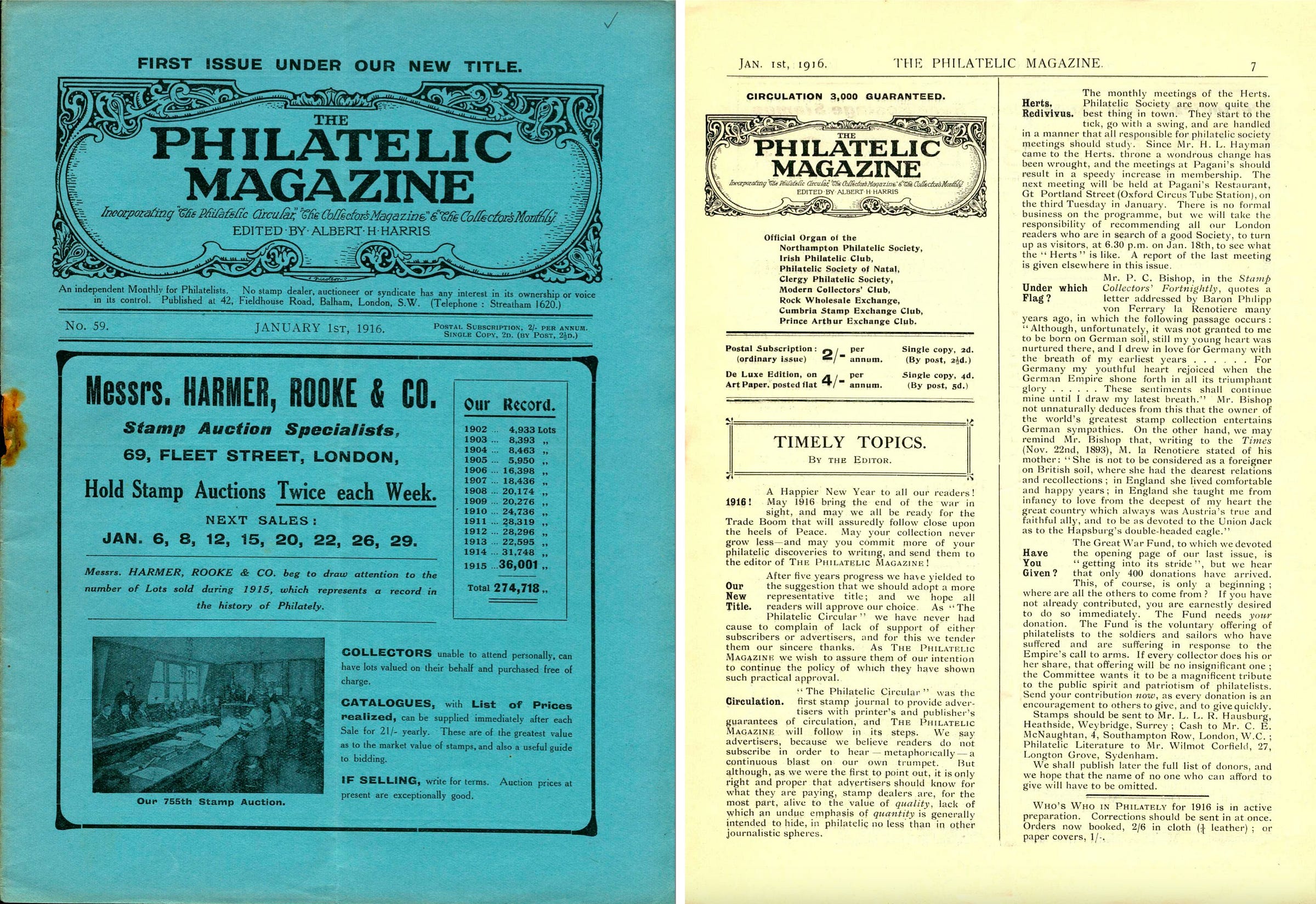
The magazine continued its numbering and the first issue of the magazine with the new name was 59 (Figure 14). For the next seven decades, notwithstanding changes in ownership, the magazine continued to come out until it ceased publication with number 1603 of July 1984.
References
Birch, Brian J. The Philatelic Bibliophile’s Companion. Montignac Toupinerie, France: The Author, 2018.
Bacon, Sir E.D. Catalogue of the Crawford Library of Philatelic Literature at the British Library. Fishkill, N.Y.: The Printer’s Stone Limited, 1991.
Chapman, Kenneth F. Introduction to The Standard Index to Philatelic Literature 1879-1925. London: Harris Publications Ltd., 1991.
Harris, Albert H., ed. The Standard Index to Philatelic Literature 1879-1925. London: Harris Publications Ltd., 1933.
Negus, James. Biographies in The Harris Index to Philatelic Literature 1879-1925. Limassol: James Bendon Ltd, 1991. First published 1933 by Harris Publications Ltd. (London).
------.. Philatelic Literature: Compilation Techniques and Reference Sources. Limassol, Cyprus: James Bendon, 1991.
Stringer, K. E. “The House of Harris – “In Britain, Not Boston.” ” Philatelic Literature Review 21 no. 1 whole no. 74 (First Quarter 1972): 34-43.
------. “ “A Pamphlet that Launched a Publisher” – Albert H. Harris 1900-1945.” Philatelic Literature Review 21 no. 2 whole no. 75 (Second Quarter 1972): 91-92.
Williams, L.N. and M. “Philately’s Great Loss.” The Philatelic Magazine 53 No. 25 whole number 795 (December 14, 1945).
Appendix
The Monthly Circular was published from January 1875 onward. Its predecessor, The Stamp Collector's Magazine, was one of philately's earliest journals having been published from February 1863 to December 1874. After taking over the Circular, Harris renamed it as The Stamp Collector's Monthly Circular (later Journal) and published it from September 1920 to August 1922. However, he amalgamated it with The Philatelic Magazine in September 1922.
The PTS is a the premier society for stamp dealers and is the organizser of the popular stamp show Stampex.
In his editorial to the 1935 issue of Stamp Collectors’ Annual, Harris mentions that the annuals for 1919 and 1921 were published by D. B. Armstrong. It was “then acquired by Harris Publications Ltd.” The next annual for 1923 was produced by his firm. Hence, Harris is quite likely to have acquired the publication either in 1921 or 1922.
Attributed to one Seargeant Freshwater of Broadstairs and published in the December 14, 1945 issue of The Philatelic Magazine (p.550)
Vera Trinder joined Harris in 1940. When the company was sold in 1969, Vera Trinder (Vera Webster after her marriage to Derrick Webster) was made redundant. She then established her own literature and accessories business. When Stamp Collecting went into liquidation in 1984, the literature business was acquired by Trinder. In 2006, Trinder sold the company to Prinz Publications (UK) Ltd. who closed the iconic physical shop at 38 Bedford Street on June 30, 2014, but still retails books on eBay UK and catalogs on its website; from 2025, it was rebranded as West Cornwall Stamp Centre. Trinder died in June 2016.
To complete the story, Harris Publications was sold by H. Gordon Harris to Urch Harris & Co. Ltd. (no relation), of Bristol, in 1967. Two years later, Stamp Collecting, Ltd. took it over. The latter went into voluntary liquidation in July 1984. The two titles, The Philatelic Magazine and Stamp Collecting were bought by Stamp News Ltd. which then published a twice-monthly magazine of the same name. Stamp News itself ceased publication in October 1986.
The Standard Index was reprinted by James Bendon in 1991. It was edited by James Negus and contained an introduction by Kenneth F. Chapman, former editor of Stamp Collecting, The Philatelic Magazine, and Philately.
This I base on an editorial in The Stamp Collectors’ Fortnightly for September 18, 1909, which begins, “The mention of Mr. Albert Harris reminds me that I have before me the prospectus of this gentleman’s newest undertaking, the Modern Collectors’ Philatelic Exchange Club.”
This was per an advertisement of the MCC in the first issue of The Philatelic Circular.
This is clarified in a small column titled “Where THE PHILATELIC CIRCULAR Can be Obtained” in its September 1915 issue.





